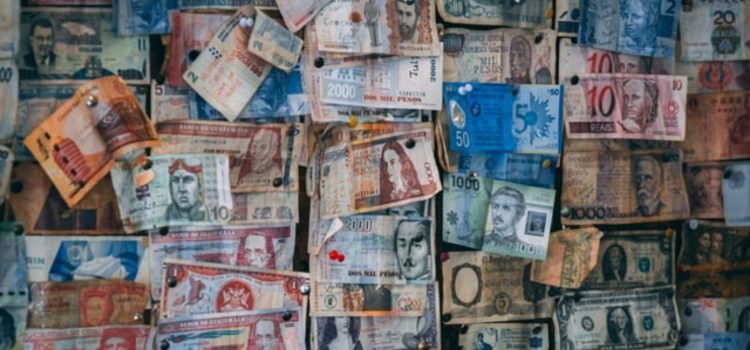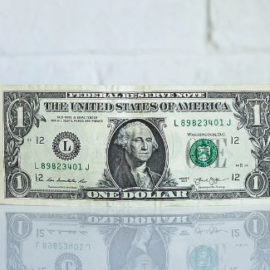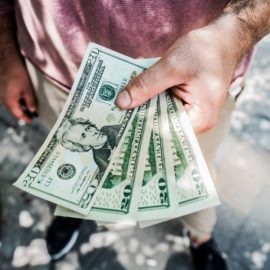

This article is an excerpt from the Shortform book guide to "Naked Economics" by Charles J. Wheelan. Shortform has the world's best summaries and analyses of books you should be reading.
Like this article? Sign up for a free trial here .
What exactly is an exchange rate? How do countries determine their exchange rates?
In simple terms, the exchange rate is the price at which you can purchase one currency using another currency. There are several ways that a country can determine the value of its currency and its exchange rate.
Learn about the economics of exchange rates, explained in simple terms. We’ll discuss the gold standard way of determining the exchange rates, and the difference between floating and fixed exchange rates.
The Gold Standard
The gold standard is the most straightforward way to assign value to a unit of currency. With this method, a country pegs its currency to a specified amount of gold. A government stores a reserve of gold, and you can trade a physical unit of currency for a specified amount of physical gold.
The gold standard has a few advantages:
- It allows for an easy way to compare currencies between nations: If one ounce of gold is worth 20 dollars in the United States and 30 pounds in England, you can easily determine the exchange rate between the dollar and the pound.
- It protects against inflation: A government using the gold standard can’t simply print money; it must have a corresponding amount of gold in its reserves to back up whatever money it creates. Therefore, it’s unable to spark inflation by flooding the market with currency.
However, the gold standard is an outdated method of valuing currency—no developed nations use it anymore. This is because it has a significant disadvantage: It can rob a government of the tools it needs to ward off recessions. A government using the gold standard can’t increase or decrease the amount of money in its economy through the fiscal policies that we discussed earlier; it’s beholden to the amount of gold in its coffers. Therefore, it has limited power to influence the flow of capital within its market.
Further, when an economy runs into trouble, foreigners who own that country’s currency lose faith in that currency, and often prefer to redeem it for gold rather than hold onto the currency itself, which they fear will lose value. When many foreigners do this simultaneously, they can drain a country’s gold reserves.
In order to protect its gold reserves, the country has to raise interest rates (because higher interest rates offer more value for investors who own that currency, they encourage people to hold onto the currency instead of trading it in for gold). Unfortunately, this is the exact opposite of what an ailing economy needs—as we discussed above, one of the most powerful things a government can do to fix a recession is to lower interest rates. Raising rates only puts a further brake on the economy, which makes it harder for that country to climb out of its financial troubles. This is essentially what happened in the early 1930s during the Great Depression in America, and it led to ever-increasing unemployment.
Floating Exchange Rates
Today, most economies have floating exchange rates. This means currencies are traded on foreign exchange markets (similar to stock markets but for currencies) and their values fluctuate against each other based on what traders are willing to pay for them, instead of against something tangible like gold. So, if a firm wants to, for example, change its dollars into yen, it would use the foreign exchange market to trade its dollars for yen at a price set by demand in the market. (A firm might change dollars into yen for a variety of reasons—for example, if a Japanese company sells its product in America for dollars, and then wishes to pay its Japanese workers in yen, it will need to exchange those dollars for yen.)
Floating exchange rates are more flexible than the gold standard because if a country needs to adjust its interest rates or to print more money, it can do so without the constraints of maintaining a physical gold reserve. The fact that the U.S. used floating exchange rates in 2007 to value its currency (instead of gold) allowed it to stave off the worst of the financial crisis with aggressive monetary policy adjustments.
However, this flexibility leads to a disadvantage as well: Firms conducting international business trust the system less, knowing that a government can adjust the value of its currency at any time.
Fixed Exchange Rates
Fixed exchange rates operate similarly to the gold standard in that they peg a currency to something else that has a stable value—in this case, instead of gold, they peg a currency to another country’s currency. Argentina did this in 1991, pegging its peso to the American dollar. To do so, it kept a reserve of U.S. dollars in its vaults, and it committed to only printing more pesos if it had dollars to back them up.
Unfortunately, a fixed exchange rate runs into the same problem that the gold standard faces: A country using this system can’t adjust its own monetary policy based on its real-time needs, because in order to keep its currency pegged to the other country’s, it must mirror the other country’s monetary policies. Therefore, when Argentina fell into a recession in the late 1990s, its government couldn’t cut interest rates or do anything else to stop the downward spiral. The system was unsustainable, and in 2001, Argentina defaulted on its debts—the largest default in history. The country was only able to move forward after unpegging its currency from the dollar.

———End of Preview———
Like what you just read? Read the rest of the world's best book summary and analysis of Charles J. Wheelan's "Naked Economics" at Shortform .
Here's what you'll find in our full Naked Economics summary :
- An explanation of economics that anyone can understand
- How governments and firms can use incentives to foster a healthy economy
- How and why people behave in certain ways






